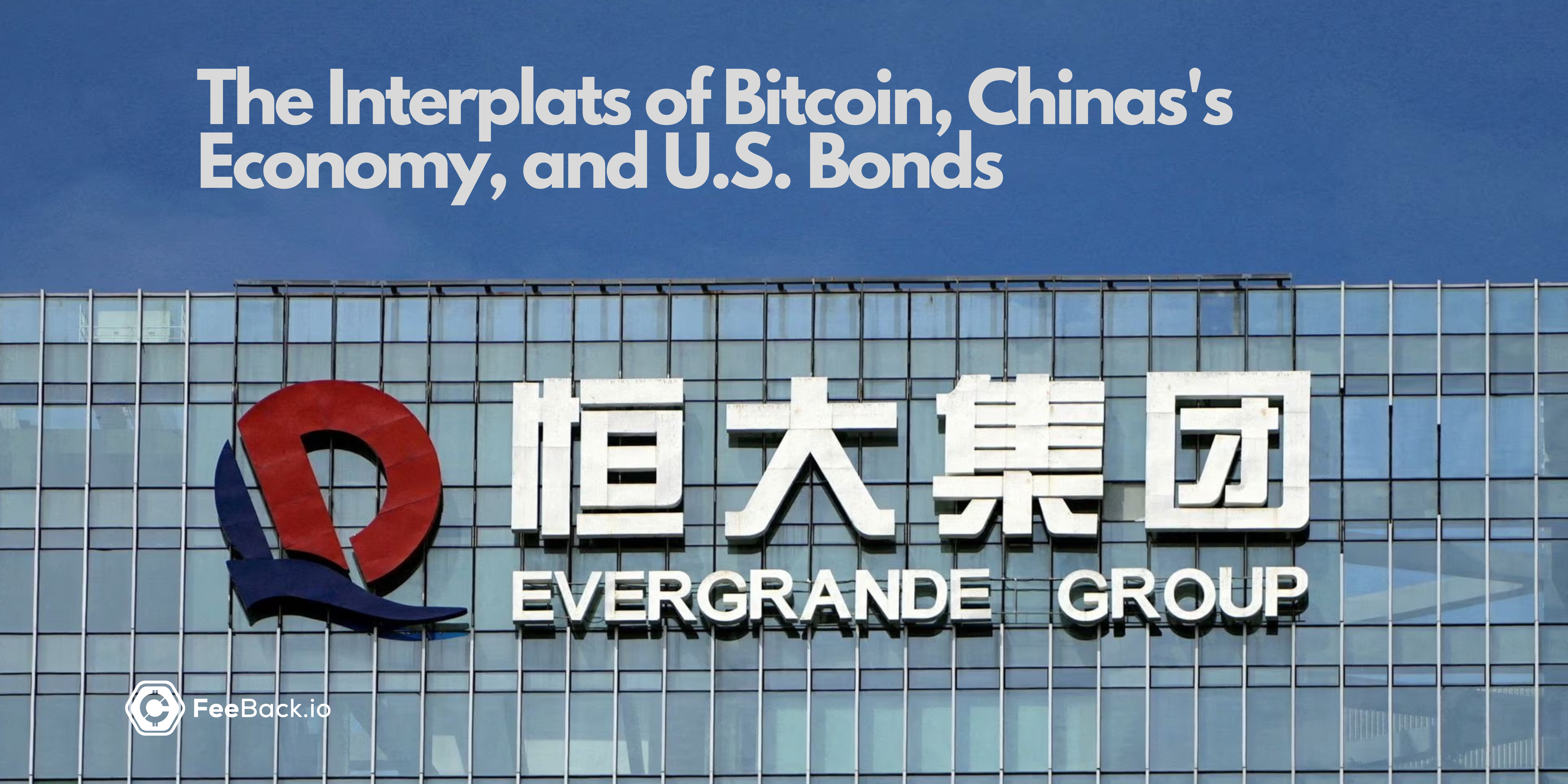August 18, 2023
•
6 min read
The Interplay of Bitcoin, China's Economy, and U.S. Bonds
Understanding the Financial Landscape: From Evergrande to Rising Interest Rates

Bitcoin: The Canary in the Financial Coal Mine?
Bitcoin has historically been a sensitive barometer for upheavals in other financial markets, often reacting faster and more intensely to changes in risk appetite than other investments.
---
China's Economic Stress: Beyond Evergrande
China's current economic predicament goes beyond just the Evergrande news. A potential deflationary spiral, propelled by the real estate sector, looms over China. This threatens consumer and business confidence, possibly leading to reduced investments and consumption, and ultimately, an economic slowdown and price drops.
Despite interventions by the People’s Bank of China through interest rate cuts and currency devaluation, the situation remains uncertain. Direct governmental intervention might be the key, although this is yet to materialize.
While this predicament is challenging for China, it might be a silver lining for the global economy. Cheaper products and raw materials can aid in controlling inflation. However, the full impact on major economies remains to be seen. We will keep tabs on these developments.

---
The U.S. Bond Market: Brewing Storm
There's turmoil in the U.S. bond market. Let's rewind to 2020:
Amid the pandemic, the world was flooded with trillions of dollars in support and stimulus measures. The consensus was that these actions would cause little harm. Yet, by early 2021, U.S. inflation began its ascent, peaking at 6.8% by December.
The Federal Reserve responded, tapering its monthly asset purchases and hinting at interest rate hikes. Indeed, interest rates on bonds began to rise, with the 2-year yield jumping from 0.2% in September 2021 to 5.0% by March 2023.
Fast forward: by 2023, the rate returned to around 4.9%, and the 10-year yield surpassed 4.3%, a record not seen since 2007. Current rates now outpace the declining inflation of 3.2%.
---
Inflation vs. Interest Rates in the U.S.: A Complex Dynamic
As shorter-term rates climb, mirroring the Fed's policy rate, the surprising rise in the 10-year yield raises eyebrows. This typically aligns with long-term growth and inflation expectations, both of which are currently on a decline.
Potential reasons? Decreased foreign demand for U.S. treasuries from major holders like China, Japan, and Saudi Arabia, coupled with increased long-term bond offerings by the U.S. government. The consequence? Higher interest rates, affecting banks, pension funds, insurers, and potentially skyrocketing rates for mortgages and credit card debts.
---
A Global Perspective on Risk
The past week witnessed a diminished appetite for risk. Not only did bond values drop, but stocks, precious metals, and even Bitcoin also took hits. Conversely, the U.S. dollar, a typical haven during uncertain times, appreciated.
